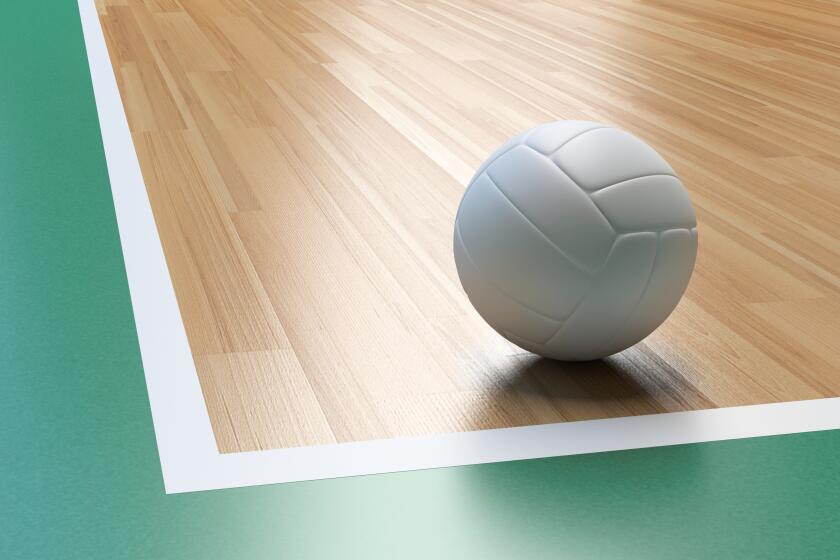Contests Foster Harmony in Watts
A tradition that began as a way to mend community relations after the 1965 Watts Riots brought out more than 7,000 teenage athletes from throughout the county over the weekend to the Watts Summer Games, an event that fosters both competition and sportsmanship.
Under gray and drizzling skies on the Southwest College campus, members of the Arcadia High School men’s water polo team tested their throwing speed with students from Oxnard. In the gym, the boys volleyball team from Beverly Hills High shared the court with students from Whittier.
“For all these folks to come from all over to South-Central is great,” said Henry Washington, athletic director and head coach at Southwest College. “People only see certain things about this area on the news -- the shootings and the killings. Now they can see there are good things here, too.”
“When we go play against other teams, they sometimes think we are from the ghetto,” said Amy Greear, 16, who plays on Hawthorne High’s softball team. “But when all the teams come here and we play, we see we’re all the same.”
Dayvon Wright, 16, a volleyball player from Beverly Hills High, said he had a similar impression.
“There are always some stereotypes about this area,” Wright said. “But you get here and you see such a positive environment and that we’re all regular people.”
The games are organized by the Los Angeles Junior Chamber of Congress, and are designed to offer Los Angeles youths from all backgrounds a chance to meet. “It is a thrill to see the smiles, the sportsmanship, the camaraderie at the games,” said Hadi Farid, this year’s chairman of the games.
Over the weekend, a dozen cheerleading teams, who were waiting for judges to tally up their competition scores, started up an impromptu dance of the cha-cha hustle in a mass of colorful uniforms. When one baseball team was missing two players and stood to forfeit the game, another team handed over two of its extra members for a scrimmage.
Rick Moos, who was chairman of the games in 1971 and has stayed involved, said such sportsmanship has long been the trademark spirit of the games, which started out attracting a few hundred athletes in the late 1960s and peaked at about 12,000 in the mid-1990s.
Organizers said they capped the number of athletes at about 7,000 because of funding issues and the difficulty in organizing such a large-scale event. Registration is on a first-come, first-served basis.
“The games are like an infection,” Moos said. “It is something about the environment and the kids that makes people keep coming back.”
Nearly 2,000 volunteers pitched in. The $130,000 cost of the games is funded by the Junior Congress and endowments, as well as sponsors.
Trophies and more than $50,000 in scholarship funds are awarded. For non-athletes, an art competition is offered.
“These games have such a tremendous impact on the community,” Farid said. “This area is mostly minority, and when you have an event where all these athletes of different cultures and ethnicities are pouring in, you realize” how much they have in common.
Get our high school sports newsletter
Prep Rally is devoted to the SoCal high school sports experience, bringing you scores, stories and a behind-the-scenes look at what makes prep sports so popular.
You may occasionally receive promotional content from the Los Angeles Times.



